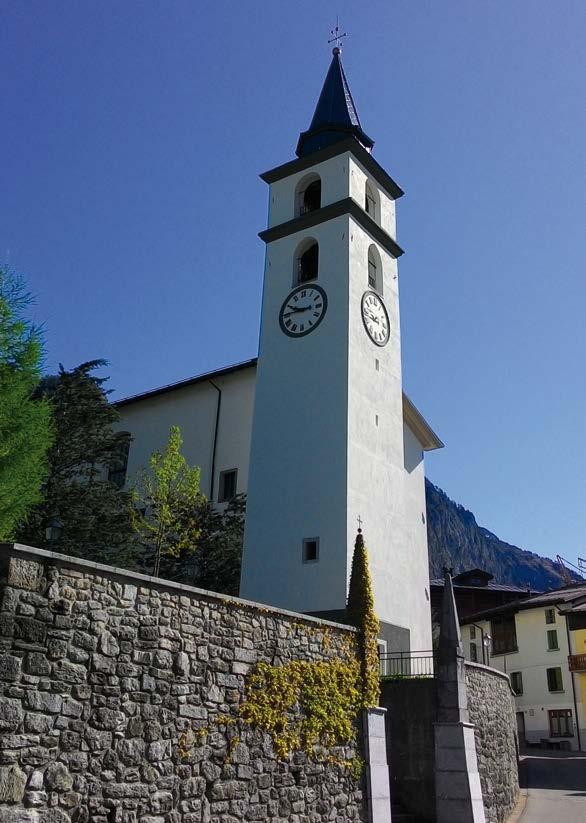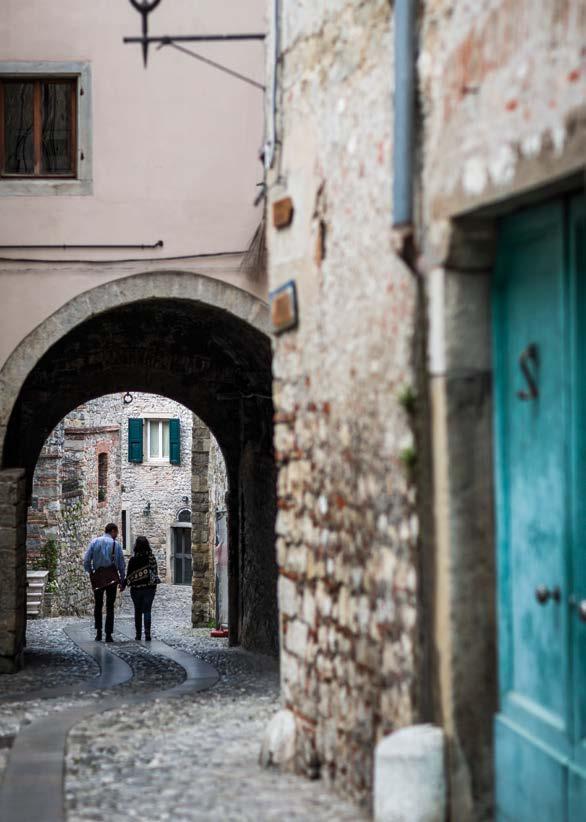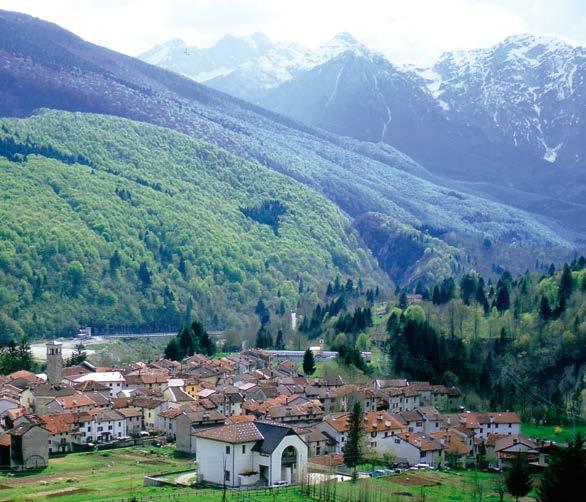ANDREIS
Andreis lies in the Friulian Dolomites Natural Park, at the entrance to the Valcellina, and, although it is just 455m above sea level, its landscape is in every way an Alpine one. One of the distinctive elements of the village is the widespread architecture of the traditional Andreis houses, unmistakeable with their balconies in dark wood and their outside staircases. The many stone walls one encounters along its streets only add to the rustic domestic atmosphere. 8
The Ethnographic Museum of Andreis documents the ancient culture of the village through objects and reconstructed rooms, exploring the daily life of the Andreis community in the first half of the 20th century. Specifically, there is a reconstruction of a typical kitchen with the obligatory fireplace and cjantonâl (corner cabinet, used both as a table and a cupboard for provisions, dishes and cutlery), as well as a reconstruction of the alpine hut, where butter and cheese were produced.
Particular importance is given to the crafts of the time: the typical working of bone to produce snuffboxes and combs; the more traditional working of wood to produce footwear and household utensils; the mowing of the pastures; and the work of the woodsmen in cutting the timber and transporting it down valley. Andreis is also known as the ‘village of eagles’, since its Visitor Centre hosts the exhibition L’Avifauna del Parco (Birdlife of the Park), and the associated Area Avifaunistica





























